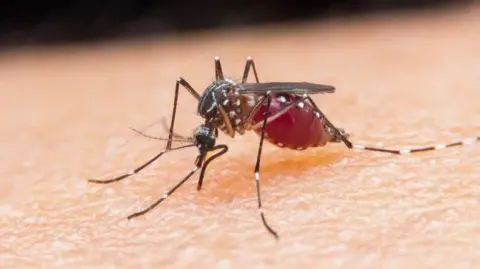Malaria, a persistent global health challenge, demands a united front for its elimination, especially given its disproportionate impact on vulnerable populations and its hindrance to socioeconomic progress. Dr. Betty Bandoh Oppong, a research scientist at the Council for Scientific and Industrial Research (CSIR) in Ghana, emphasizes the urgency of collective action to safeguard lives and boost productivity. Pregnant women and children under five are particularly susceptible to the devastating consequences of malaria. For expectant mothers, the disease can lead to stillbirths, preeclampsia, low birth weight, and infant mortality. Young children face risks such as impaired cognitive development due to anemia, convulsions, and even death. Beyond these specific groups, the broader impacts of malaria include disability, organ damage, mortality, diminished well-being, and reduced work capacity, all of which contribute to economic hardship and compromised quality of life.
The economic burden of malaria extends beyond individual suffering. Treatment and management strain resource-limited communities, particularly during peak malaria seasons, and place a significant burden on healthcare systems. Lost workdays for caregivers due to illness or caring for sick family members further exacerbate financial hardship, leading to increased poverty and food insecurity. This vicious cycle perpetuates vulnerability and hinders community development. Dr. Oppong stresses the need for a multi-pronged approach involving researchers, healthcare providers, the public, and government, particularly through increased investment in research and control programs. Africa bears the brunt of the global malaria burden, with Ghana accounting for over two percent of all cases on the continent. The common symptoms of malaria, which typically manifest 7 to 14 days after infection, include fatigue, nausea, vomiting, cough, respiratory issues, chills, and fever.
Dr. Joseph Harold Nyarko Osei, a biomedical research scientist at CSIR, highlights the historical significance of malaria, noting its presence as a human disease for approximately 100,000 years. Despite centuries of battling this ancient foe, the global malaria statistics remain alarming. In 2023 alone, approximately 263 million malaria cases were reported, with a staggering 94 percent originating from Africa. Tragically, the disease claimed the lives of 597,000 individuals, 95 percent of whom were African, and a devastating 76 percent being children under five years of age. These sobering figures underscore the urgent need for innovative and effective interventions.
The fight against malaria necessitates a combination of traditional and cutting-edge strategies. Current control interventions include transgenic approaches, spatial repellents, attractive toxic sugar baits, insecticide-treated wall linings and eave tubes, drone-assisted larviciding, and drone-assisted vector mapping. Future research and implementation efforts are focused on incorporating artificial intelligence-driven vector mapping and digital vector surveillance systems to enhance disease monitoring and control measures. Dr. Osei underscores the importance of education, advocating for intensified educational programs in schools and communities. These programs should focus on raising awareness about malaria transmission, prevention, and control, empowering individuals to actively participate in mitigating the disease’s impact.
Malaria vaccine development represents a crucial frontier in combating this persistent disease. Dr. Akua Kyerewaa Botwe, a malaria expert and research scientist, reveals that currently, 130 malaria vaccines are in various stages of development globally. Of these, 90 percent target Plasmodium falciparum, the most virulent malaria parasite species. The parasite’s complex life cycle necessitates a multi-faceted vaccine approach, targeting different stages of its development. Pre-erythrocytic vaccines aim to prevent the parasite from infecting liver cells, while erythrocytic vaccines target the parasite during the blood stage, where it causes the characteristic symptoms of malaria. Transmission-blocking vaccines, on the other hand, aim to prevent the transmission of the parasite from humans to mosquitoes, thereby interrupting the disease cycle.
The ongoing research and development of malaria vaccines represent a beacon of hope in the fight against this devastating disease. While the path to an effective and widely accessible malaria vaccine remains challenging, the significant progress made to date offers promise. Combining vaccine development with existing control strategies, such as insecticide-treated nets, indoor residual spraying, and prompt diagnosis and treatment, offers the best hope for achieving significant reductions in malaria morbidity and mortality. The collective efforts of researchers, healthcare providers, communities, governments, and international organizations are essential to realizing the vision of a malaria-free future. Through sustained investment in research, innovation, and implementation, we can translate “bites to breakthroughs” and reignite the fight against this ancient foe.














